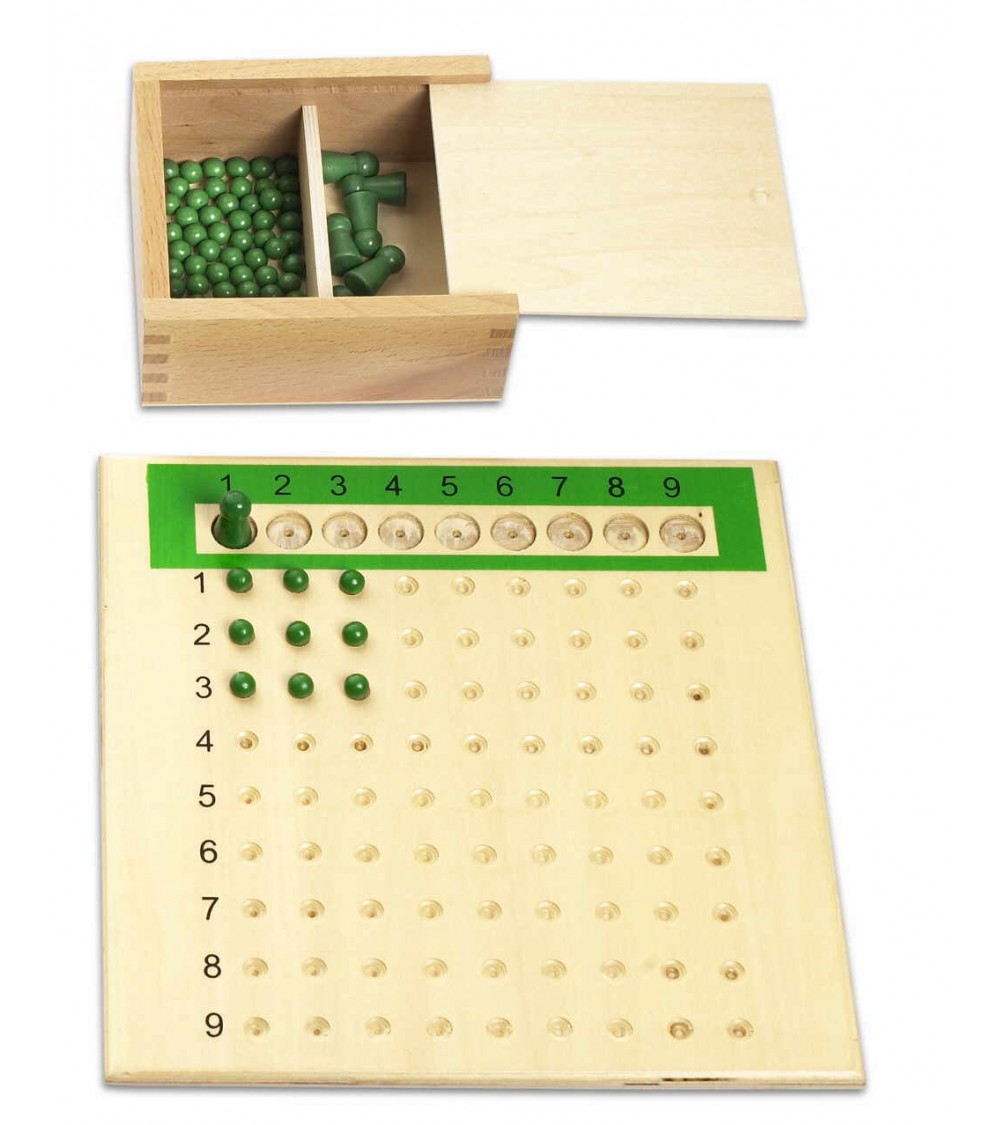Division Board
Division board including accessories to easily learn divided arithmetic with Montessori material
Made of wood, approx. 22.5 x 22.5 cm
The division board is one of the indispensable Montessori materials for teaching math. With this, elementary school students feel their way step by step to divide tasks using the multiplication table and automatically deepen the series of numbers. Touching and counting the pearls, the geometrical representation of the division tasks, as well as the pleasant material wood make the division an easily tangible science.
Application, advantages, areas of application for this Montessori material:
-
- Practicing shared tasks in a small one-time-one way
-
- understand and learn the division
-
- Understand the division of numbers
-
- Montessori material for children from 5 years
Scope of the Montessori teaching material:
1 division board, wood, approx. 22.5 x 22.5 cm
9 green figurines, wood, height approx. 2.5 cm
81 green balls, wood, diameter approx. 7 mm each
1 storage box with sliding lid , Wood, approx. 12 x 11 x 6 cm
Instructions for the division board
The division board is used to examine the divisibility of numbers and makes it possible to see and understand what happens during a division. This classic Montessori material illustrates the close connection between multiplication and division and consolidates the painting series even more deeply.
The division board is placed on the table. The box with the green pearls and cones is within reach. Now you can start calculating!
For the example exercise 18: 2 = the following things are required: 18 green pearls and 2 green cones
The two cones are inserted into the bar on the upper edge of the board with a green border. The 18 pearls are taken from the wooden box and counted loudly in a bowl. These pearls are now distributed horizontally so that each figure receives the same amount.
Ie the first cone receives a pearl, the second cone receives a pearl. If there are still enough pearls in the bowl that each cone can get a pearl (here the appraisal is trained at the same time), it is distributed further. In the next row of the board, each cone receives another pearl one after the other. This continues until either all of the pearls are evenly distributed.
At the end, there are 9 pearls under each pawn. The result is read on the first pin (what one has) = 9 => 18: 2 = 9
Of course, there are also numbers that cannot be divided equally or bills that result in a residual value. This means that the number of pearls remaining in the bowl cannot be distributed evenly to all cones. This amount then forms the so-called remainder for tasks with a remainder.
eg 21: 4 =
After all, pearls have been divided up, figures 1 to 4 each have 5 pearls, but one pearl remains.
A pearl could not be distributed - it forms the remainder.
21-4 = 5 remainder 1

